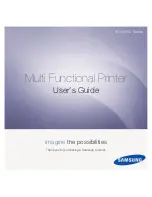
10/2006
xx
Phaser 8510/8560MFP Multifunction Product
Specifications
Initial Issue
Introduction
Image Specifications
NOTE: To derive the skew specification for a particular media size, measure the width of the
leading edge in millimeters. Next, divide the measured length by 1000, then multiply by the
appropriate Image Area Tolerance specification in milli-radians. For example, A 5 in. by 7 in.
custom page would have a leading edge width, in millimeters, of 127mm (5 in.). Dividing the
127 by 1000 (127/1000), then multiplying the result by the 11 milli-radians specification results
in a maximum skew of 1.4 mm (127/1000) x 11 = 1.4 mm.
Media and Tray Specifications
The media trays accommodate most sizes and types of paper, transparencies, or other spe-
cialty media. Print the Paper Tips page for a list of supported media.
Media that May Damage the System
The system can use a variety of media for print and copy jobs. However, some media can
cause poor output quality, increased jams, or damage. Unacceptable media includes:
•
Rough, plastic, or porous media
•
Paper that has been stapled, folded, photocopied, or wrinkled
•
Envelopes with windows, metal clasps, padding, or adhesives with release strips
•
CD labels
•
Media that is less than 60 g/m2 or more than 220 g/m2
Media Storage Guidelines
If media handling problems are a common occurrence, review the following storage guidelines
with the customer.
•
Store paper in dark, cool, relatively dry locations. Most paper items are susceptible to
damage from ultraviolet (UV) and visible light. UV radiation, which is emitted by the sun
and fluorescent bulbs, is particularly damaging to paper items. The intensity and length of
exposure to visible light on paper items should be reduced as much as possible.
•
Maintain constant temperatures and relative humidity
•
Avoid light, heat, and dampness.
•
Avoid attics, kitchens, garages, and basements for storing paper. Inside walls are drier
than outside walls where moisture can collect.
•
Store paper flat. Paper should be stored on pallets, cartons, shelves, or in cabinets.
•
Avoid having food or drinks in the area where paper is stored or handled.
•
Do not open sealed packages of paper until needed. Leave paper in the original packag-
ing. For most commercial grades, the wrapper’s inner lining protects the paper.
•
Some specialty media is packaged inside sealed plastic bags. Leave the media inside the
bag until needed; return unused media to the bag.
DADF Media Guidelines
The DADF accommodates sizes from 114 x 140 mm (4.5 x 5.5 in.) to 216 x 356 mm (8.5 x 14.0
in.), with weights within the following range: 60–120 g/m2 (16–32 lb. Bond) (22–45 lb. Cover).
Follow these guidelines when loading originals into the document feeder:
•
Load originals face-up, so the top of the document enters first.
•
Place only loose sheets of paper in the document feeder.
•
Adjust the paper guides so they fit against the originals.
•
Insert paper in the document feeder only when the ink on the paper is completely dry.
Use the glass rather than the document feeder to copy or scan the following types of originals:
•
Paper with paper clips or staples attached
•
Paper with wrinkles, curls, folds, tears, or notches
•
Coated or carbonless paper, transparencies, or items other such as cloth or metal
•
Envelopes
Supported Media
The following sections provide information about paper sizes and weights that can be used in
the system trays. For more detailed information about supported paper and other media, print
the Paper Tips page:
1.
On the Control Panel, press the System button.
2.
Select Information, and then press the OK button.
3.
Select Information Pages, and then press the OK button.
4.
Select Paper Tips, and then press the OK button to print.
See also: Recommended Media List at www.xerox.com/paper
Table 10 Print Engine Only Skew Specifications
Characteristic
Specification
Printed Left Side Margin
5.0 mm + 2.0 mm (0.197 in. + .080 in.)
Leading Edge Margin
5.0 mm + 1.3 mm (0.197 in. + .050 in.)
Table 11 System Skew Specifications Scan, Copy, Print
Characteristic
Specification
Printed Left Side Margin
5.0 mm + 4.0 mm (0.197 in. + .157 in.)
Leading Edge Margin
5.0 mm + 3.3 mm (0.197 in. + .130 in.)
Image Area Tolerance Zone
Image Skew, Envelopes
15.5 milli-radians max across the width of the leading edge.
Image Skew, Index Card
18.0 milli-radians max across the width of the leading edge.
Image Skew, All other sizes 11.0 milli-radians max across the width of the leading edge.
Table 12 Image Specifications
Characteristic
Specification
Maximum Print Area
302 mm x 1194 mm
Guaranteed Image Area
297 mm x 1194 mm
Resolution/Gradation
Fast Color: 300 x 300 dpi
Standard: 300 x 450 dpi
Enhanced: 563 x 400 dpi
Photo/Hi Res: 525 x 1200 dpi
Summary of Contents for PHASER 8560MFP
Page 1: ...701P01133 October 2006 Phaser 8560MFP Multifunction Product Service Documentation...
Page 4: ...10 2006 iv Phaser 8510 8560MFP Multifunction Product Initial Issue Introduction...
Page 22: ...10 2006 1 2 Phaser 8510 8560MFP Multifunction Product Initial Issue Service Call Procedures...
Page 28: ...10 2006 2 2 Phaser 8510 8560MFP Multifunction Product Initial Issue Error Messages and Codes...
Page 84: ...10 2006 3 2 Phaser 8510 8560MFP Multifunction Product Initial Issue Image Quality...
Page 116: ...10 2006 4 2 Phaser 8510 8560MFP Multifunction Product Initial Issue Repairs and Adjustments...
Page 194: ...10 2006 5 2 Phaser 8510 8560MFP Multifunction Product Initial Issue Parts List...
Page 204: ...10 2006 6 2 Phaser 8510 8560MFP Multifunction Product Initial Issue Diagnostics...
Page 256: ...10 2006 7 2 Phaser 8510 8560MFP Multifunction Product Initial Issue Wiring Data...
Page 274: ...10 2006 8 2 Phaser 8510 8560MFP Multifunction Product Initial Issue Theory of Operation...
















































